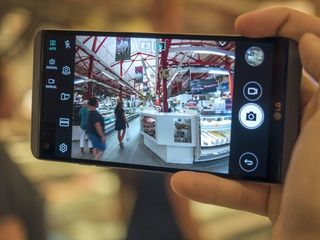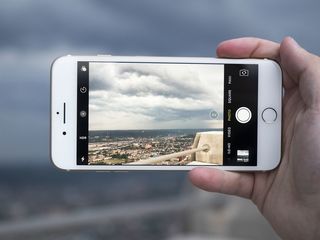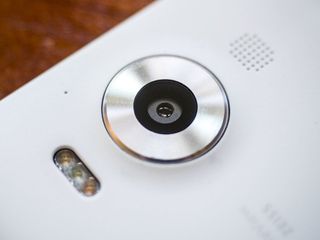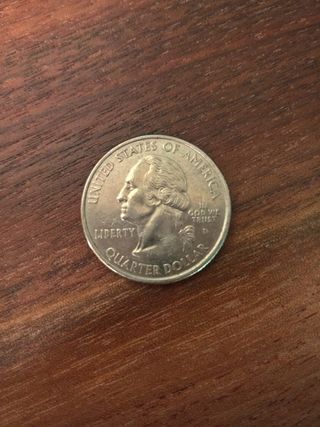Smartphone Camera Comparison: iPhone 7 vs. Galaxy S7 vs. LG V20 vs. Lumia 950

We showed you 16 sets of photos taken by four unspecified cameras, with all identifying data stripped away and presented in a randomized-on-load order for each block, all in an effort to ensure that you would be able to judge based on the quality of the photo and nothing more. And so, based on this wide range of photos, it's time to see just who makes the best smartphone camera today.
According to more than 13,000 of your votes, the best smartphone camera is the Samsung Galaxy S7.
The Galaxy S7 was up against another Android phone in the LG V20, as well as the new iPhone 7 and the Windows 10 Mobile-powered Microsoft Lumia 950.
Why these phones?
Simply put: they're the best smartphone cameras you'll find. We went with what we expected would be the top four — it's been several months since we last did this and we wanted to both revisit some "older" excellent phones (Galaxy S7 and Lumia 950) that have received new software in the interim and pit them against the newer smartphone camera beasts on the block (V20, iPhone 7).
Including the Samsung Galaxy S7 was a natural choice — it won our last smartphone camera comparison, and with software updates the already great camera has only improved. The camera in the Galaxy S7 is also the same as you'll find in the Galaxy S7 edge and Galaxy Note 7, so you can easily extrapolate these results to those phones. It was a great camera earlier in 2016 and it's still a great camera today.
The other carry over was the Microsoft Lumia 950 — it's also the oldest phone here, nearly a year old at this point. Including it wasn't to throw a bone to the Windows phone crowd, no, the Lumia 950 had a great camera in late 2015 and with the recent update to Windows 10 Anniversary Update it received a whole new app and camera features (panorama!) worth testing again. But could it measure up to a raft of newer phones? There was only one way to find out.

And then there are the new phones. LG's V20 was announced in early September, but has started shipping in some locales (but not yet the United States). The version that we used for testing here was a pre-production Korean unit, but one that should be representative of the final product. LG has made serious strides in its camera performance over the past few years and has often led the way when it comes to new technical features. We should note that the LG V20 sports an extra-wide-angle 135º secondary camera, and while we do love the option, it wasn't used in this comparison.
Be an expert in 5 minutes
Get the latest news from Android Central, your trusted companion in the world of Android
The other new phone that was the impetus for doing this comparison again won't surprise anybody: the iPhone 7. Apple's made a big deal about their smartphone cameras in the past few years, and the previous iPhone 6s performed well in good lighting conditions in our previous showdown, but floundered as soon as the lights went out. With a widened aperture of f/1.8 and (finally) stabilization in the smaller iPhone, it looks like the device might be on even technical footing with the others. And while the iPhone 7 Plus has a secondary camera that's essentially a 2x zoom, like the V20's wide-angle camera it wouldn't make for an apples-to-apples comparison.
We also carried the Honor 8 to take photos. Despite the dual-camera hype around the phone, it was immediately obvious that it was the worst of the bunch by a noticeable degree, especially in low-light shots and anything with motion, so we dropped it from the comparison.
How we shot
Over the course of a few days I carried these four phones to various locations to put them to the test in a variety of settings and conditions. Every photo was shot in Auto mode with settings matching what you get out of the box from the manufacturer — down to automatic exposure and even auto HDR when the camera felt it was appropriate. The only modifications we made to any photos were stripping identifying data before uploading.
Yes, every one of these phones can shoot in RAW with manual controls (iPhone requires a manual app, of which there are many) and we know and embrace that these files would be better for editing to create a better image than the full-auto JPGs. But that's not how "normal" people use these phones. There are hundreds of millions of these smartphones out there, and the overwhelming majority of people taking photos with them aren't bothering with manual modes or with editing RAW files. That requires technical knowledge that most people don't have, and that's okay.

And to be perfectly frank, if you really care about fiddling with your white balance, ISO, shutter speed, and everything else, then you already know what you want in a camera — and you don't want the tiny lens and sensor you get in a phone. You want a real camera with real controls and a big sensor and beautiful lenses.
But, as they say, the best camera is the one you've got on you. Messing around with manual controls means you're going to miss the shot. Smartphones these days produce some really amazing photos on auto. We're not professional photographers, and odds are neither are you, so Apple, Microsoft, Samsung, and LG have all designed their camera apps to be accessible to the populace at large.
No modifications were made to the photos before comparison, although for display here they were automatically shrunk to a more manageable size.
Spec Showdown
There's one last thing before we dive into the photos: specs.
| Category | Apple iPhone 7 | LG V20 | Microsoft Lumia 950 | Samsung Galaxy S7 |
|---|---|---|---|---|
| Megapixels | 12MP | 16MP | 20MP | 12MP |
| Resolution | 4032x3024 | 4656x2492 | 4992x3744 | 4032x3024 |
| Sensor Size | 1/3" | 1/2.8" | 1/2.4" | 1/2.6" |
| Pixel Size | 1.22μm | 1.12μm | 1.12μm | 1.4μm |
| Aperture | ƒ/1.8 | ƒ/1.8 | ƒ/1.9 | ƒ/1.7 |
Alright, that's a lot of numbers. But what do they mean?
Megapixels is a count of the total number of pixels you'll find on a camera sensor, arranged in a grid. The "mega" in megapixel means one million, so a "12 megapixel" sensor will have 12 million pixels on it. More pixels mean a more detailed image. We're only now getting into the era of 2K smartphone displays and 4K TVs and compute monitors, and 4K only equals 8.8MP, so every one of these cameras will produce images "bigger" than your screens. More megapixels mean, though, that you can crop in closer without losing detail or that you can print a larger image — even poster-sized at 12MP — and not start seeing the pixels.
Resolution is the size of the pixel grid, width and height. Multiply the two and you'll get the pixel count, and thus the megapixels.

Sensor size is the literal physical size of the sensor. More megapixels mean the camera will produce a bigger image, but it doesn't mean that the camera itself is actually bigger. A bigger sensor can collect more light for a brighter photo, or fit more pixels for a bigger one. Sensor size is measured as a fraction — the larger the number, the larger the sensor (remember, in fractions a smaller denominator results in a bigger number). Of these four phones, the Lumia 950 has the biggest sensor — but it also packs in the most pixels, which leads to our next measurement…
Pixel size is a measurement of the physical size of an individual pixel on the sensor. This is where megapixels and sensor size collide and where the rubber meets the road. A bigger pixel can collect more light, which in daylight use you won't notice, but as soon as it goes dark the bigger pixels can produce brighter and less noisy images. It's worth noting that these are still microscopically tiny pixels we're talking about here — 12 million on a plate the size of a pinky nail. So they're measured in micrometers (μm). The biggest pixels here are on the Galaxy S7 and iPhone 7 at 1.4μm, and that's 1/70th the thickness of a human hair. These things are tiny.
Aperture is the size of the hole the light is passing through, and it works exactly the way you think: the bigger the opening, the more light gets to the sensor. The more light on the sensor, the better an image it can produce. Aperture is expressed as a fraction (the "ƒ" stands for "1"), and so the smaller the number in that fraction, the bigger the opening. We could get technical with it, but it's worth noting that the difference between ƒ/2.0 and ƒ/1.4 is double the light.
Take it again!
One more thing — just for giggles and your own edification: we've created a copy of the blind survey from before. It's still blind to start, but when you select your favorite photo this time it'll tell you which phone you picked. This is just for fun, we won't be tallying these into the 13,557 that informed the results below, we just want you to know what your own eye picked.
See which photos you picked as the best
The Photos
So we've said that the Galaxy S7 won, but how did it win? Let's go through each photo comparison.
Indoors












On the artificially lit interior shot, the Galaxy S7 pulled way ahead, besting the next-best iPhone 7 by a solid 45% to 28%, largely due to its more pleasing saturation. Truth be told, the V20's image was more accurate than both of them, best capturing the yellowish hue of the lighting inside Findlay Market without squashing the red of the metal beams. But Samsung's win here is a trend you'll see repeated over and over: hyper-saturated colors are more pleasing to the eye.
When the lights went down inside, both the LG V20 and Lumia 950 performed well. Actually, all four phones performed admirably, but the Lumia and V20 both struck a balance between the iPhone's muted color palate and the Galaxy's too-saturated look.
Outside




















As soon as we step outside into the green environs of Washington Park, the Galaxy S7's propensity for hyper-saturation again becomes an asset, bringing brilliant, truer-than-life colors to play. But as before, it was far from the most accurate — even if it was the most-liked image by an incredibly wide margin (67% vs 11-12% for the others). In this outing, the V20 did an admirable job of balancing the shadows and sunlight, though the end result was a flat image. The iPhone 7 and Lumia 950 sat in between these two extremes, giving images that were practically indistinguishable.
In bright lighting, none of these phones faltered in capturing a lightning-fast photo, each freezing the water jets of the fountains right in place. But it was the Lumia 950 that came out on top with contrast that actually gave depth to the water jets, though at the expense of the overall brightness of the image.
Stepping outside, the Galaxy S7's propensity for hyper-saturation again becomes an asset, bringing brilliant, truer-than-life colors to play.
Panoramas were the most special camera mode that we tested, and here the iPhone 7 and Galaxy S7 were neck-and-neck, with the latter winning out in the polling by a mere 1%. It's easy to see why both ranked high — the dramatic brightness contrast of the approaching storm wreaked havoc on the V20 and the Lumia 950, producing images that were overly dark on the sunlit left side and too bright in the dark clouds on the right. The Lumia 950 in particular struggled mightily, with shifting color balance and an unforgivable stitching error (we didn't notice it until long after, alas). Both the Galaxy S7 and the iPhone did an admirable job keeping the brightness and colors in check across the entire exposure, though again the saturated hues of the Samsung again pushed it over the top — even over the superior brightness balance of the iPhone 7. And in case you're wondering what that light streak is in the middle of the storm on the iPhone's photo: that's what happens when a sweep-style panorama meets lightning.
For all of its strengths in the daytime panorama, the iPhone 7 fell flat at night.
Thanks to optical image stabilization and a twice-as-large aperture than before, the iPhone 7 is finally a competent nighttime shooter. But it was not the best. In fact, it fared the worst, though none of its nighttime shots were particularly bad (though they were undersaturated). It was the Lumia 950 that won the nighttime poll, barely edging out (you guessed it) the Galaxy S7 by just 46 votes. Both produced sharp, high-contrast images with plenty of color. It came down to preference; the Lumia toned down the brightness to bring out more detail in the brilliantly lit stadium, while the Galaxy ramped it up and pushed the hues towards warmer tones.
For all of its strengths in the daytime panorama, the iPhone 7 fell flat at night, producing a final image that was terribly dark, undersaturated, and weirdly blue. But the worst performer was the Lumia 950, which committed the exact opposite sin: a too-bright night shot that washed out almost the entire image — a shocking result given the excellent nighttime single-photo showing. Coming down to LG and Samsung, the LG V20 had the best overall nighttime performance, balancing brightness and color and contrast beautifully in stills and panoramas.
Portrait












So that's a lot of taking pictures of buildings and plants and things, but what about people? After all, many of those moments you're going to want to capture are going to involve the people in your life and the things they're doing — and the things you're doing, so being able to capture people and faces cleanly and accurately is of some importance.
Portrait photography has long been one of the iPhone's strongest suits, and it lives up to that in our testing. At least it does in well-lit conditions. The Samsung's penchant for oversaturating made my face go all pink and red, the LG V20 went bright and pink, while the Lumia ended up giving me something of an artificial tan. While I don't mind looking like I've gotten more sun than I actually have, it was the iPhone that manage to produce the most natural-looking photo — soundly trouncing the competition with nearly half the vote.
Taking portraits, it was the iPhone that manage to produce the most natural-looking photo.
But as soon as the lights went down the Galaxy S7's tendency towards oversaturation dramatically lifted the Samsung's quality, sitting it between the practically ashen iPhone 7 (I get some sun, I swear!) and the almost Trumpian overly saturated LG V20. The Lumia 950, for all its bright aperture and big sensor, struggle to find balance in the darkness, exposing the background just as well as the others but leaving the subject dull and dark (like my soul).
When it comes to photos using the flash, our pick for the best is — just don't use flash. Each phone fired off a quick flash first to get focus and balance and then a brighter and color-calibrated flash to match the scene, and each produce a photo that's unflattering at best. Flashes on phones are simply too close to the lens and subject, and there's no physical way around that reality. That said, the Galaxy S7 secured the most votes in this comparison, thanks again to its saturated looks and a relatively close color balance, though it was the second-place V20's colors that were probably closest to accurate.
Food








Second to selfies, it's food photos that rule the social media photography landscape. Who doesn't love sharing a beautiful photo of a gorgeous dish and bragging about how tasty it is? As with most of these comparisons, in good lighting each phone performed admirably — only 5% separated the top three: Galaxy S7, iPhone 7, and LG V20. The iPhone and Galaxy S7 practically tied, with some preferring the iPhone's brightness while others opted for the Samsung's colors (though the LG V20 seemed to strike a nice middle-ground between the two). The sole outlier was the Lumia 950, which seemed to go for a longer exposure that led to blurriness, all while not giving the brighter image you'd expect from more time.
Take your meals in the dark, however, and you'll notice a predictable pattern: the iPhone is undersaturated, the Samsung oversaturated, and it's the LG and the Lumia that strike a happy balance. In the end it was Windows Phone, with the Lumia 950, that won this round with a brighter and cleaner photo that best balanced the many colors of the salad.
Selfies








With the front-facing camera LG made a decision with the V20 that I believe to be a critical error. The phone's predecessor, the V10, was their first phone to feature a dual-camera standard-and-wide-angle setup, but unlike the V20 and G5, the dual cameras were the front-facing cameras. Yes, two selfie cams — one at a standard 80º and the other at an extra-wide 120º so you can easily capture more of your environment along with your head. It was a nice enough feature, and with the G5, LG did the thing we wanted most out of those cameras: put them on the back instead with a standard-angle front-facing cameras. Not wanting to lose out on the wide-angle fans of the V10, though, LG included only the wide angle camera on the front and the dual cameras on the back. Consequently, any traditionally-framed front-facing photos are actually cropped from the middle of the 5MP shooter and they look abysmal.
LG's wide-angle selfie cam produces traditional photos that are actually cropped from the middle of the 5MP shooter — and they look abysmal.
At the same time, Apple's upgrade the front camera in the iPhone 7 to 7MP, allowing it to (in theory) offer the most detailed photos of the bunch — all the rest are at 5MP. And in practice the iPhone 7's front camera did fair quite well. In good lighting, just as with the iPhone's rear camera, it managed to offer the most realistic skin tones. It actually faired better in the darkness than the bigger and better rear camera, refusing to crush saturation out of the image. But the Galaxy S7 handled the dark better out front as well, firing off an HDR image that nicely balanced the shadows and bright lights in the rear, even if a lot of facial detail was lost along the way.
Macro




Get up close with any of these phones and you'll probably get a good-and-sharp photo. We pointed ours at a standard quarter dollar coin and each was able to get crisp captures as a result. While the Lumia 950's 20MP resolution hadn't aided it much in the rest of this comparison, unless you really wanted to crop in, when it came to macro photos it was able to capture even more detail than its 12MP and 16MP rivals. The Galaxy S7 and LG V20 both produced nicely-balanced photos that replicated both the texture and color of the wood and the detail of the coin. Oddly, it was the iPhone 7 that went for oversaturation this time, dramatically ramping up the yellows for a very unnatural look.
Overall Tally
And so, coming out on top with a commanding 39% of the overall vote was the Samsung Galaxy S7. The LG V20 and Apple iPhone 7 duked it out for second place, coming in at 22% and 21%, respectively. The Microsoft Lumia 950, despite being a year old, still came in at a respectable 18% overall.
When you start to break it down, the iPhone fares much better when you only focus on well-lit photos, matching the Galaxy S7 at around 1/3 of the total vote. Take away the bright photos, though, and the Galaxy S7 wallops the competition, the V20 rises to a strong second place, and the iPhone falls to a distant last place behind the Lumia 950. But if taking pictures of people is your thing, grab an iPhone 7 — especially the 7 Plus with its 2x zoomed lens.

We, as animals of a base nature, are drawn to saturated colors. It's programmed into our very DNA, from the food that we eat to the clothes that we wear to the characteristics we look for in a mate, brighter and bolder colors are better. That's what we're drawn to in photos, even if it's more colorful and brighter than real life — and that's what smartphone makers are increasingly giving us in both the photos taken by the camera and the quality of the screen.
Samsung, by the results here, is clearly giving the people what they want.
Samsung, by the results here, is clearly giving the people what they want. It won the most of these contests and the most overall votes, but it was still far from the majority choice in nearly each comparison. LG and Microsoft, too, amped up the saturation in their photos. In isolation there doesn't appear to be anything wrong with the iPhone's photos, but as soon as they're compared side-by-side with the competition the iPhone's saturation deficit stands out in dramatic fashion.
Of course, you can shoot in RAW with any of these cameras and adjust the brightness, saturation, and everything else to your liking — or even adjust a JPG photo afterwards — but that's not what this comparison is about. Most of the photos we take are impromptu moments captured on the fly, not something we stage and frame and ensure is beautifully lit and perfectly positioned. It's about capturing the moment, not as we see it, but as we want to remember it: bright, vivid, and full of color.
Derek Kessler is Special Projects Manager for Mobile Nations. He's been writing about tech since 2009, has far more phones than is considered humane, still carries a torch for Palm (the old one), and got a Tesla because it was the biggest gadget he could find. You can follow him on Twitter at @derekakessler.
